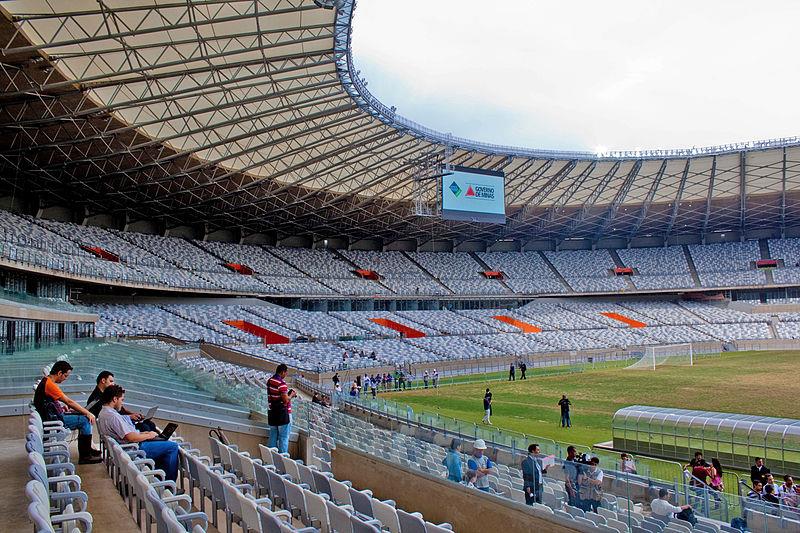As the 2014 FIFA World Cup Brazil commences, many stadiums are in similar condition to the Arena de Sao Paulo, the location of the opening game of the tournament, which seats over 20,000 fans in a structure that was never tested for safety during a full game, and under a roof that wasn’t finished in time for the start of the tournament.
According to an NBC report, five of the 12 stadiums are still being built for the tournament, and protesters, riot police and tear gas are flooding the streets of Sao Paulo as the public shows its disapproval of the estimated $3.5-15 billion spent on the games. Recent opinion polls report that over half of the population wish the tournament wasn’t happening in their county.
The games are happening during a period of economic instability, which is never a smart time to build billion-dollar stadiums. As inflation continues to rise and consumer confidence hits a new low, FIFA officials are probably wondering why they awarded the games to this country whose authorities they’ve said have been “hell” to deal with.
The tournament’s success will depend on whether the country can A) finish these stadiums in a safe manner and B) follow through on a project that could prevent them from being the most infamous world cup in history–the Stadium Sustainability Project.
According to FIFA’s website, most of the stadium owners involved with the tournament agreed to build or renovate their stadiums in accordance with green-building certification requirements after the National Economic and Social Development Bank of the Brazilian federal government approved loans for the project. One of the stadiums, the Castelao, has been awarded the LEED certificate, and is the FIFA World Cup’s first eco-friendly stadium.
The most notable initiative that has been undertaken by stadiums such as Estadio Mineirao of Belo Horizonte and Estadio Do Maracana in Rio de Janeiro are new roofs that contain a rainwater collection system allowing water to be captured and reused in stadium toilets and to water the pitch (the Mineirao’s roof can hold up to 1,656,000 gallons). Along with this kind of roof, the Arena Amazonia in Manaus also plans to feature solar panels and plant screens to lower energy costs. The Arena Pantanal in Cuiaba is nicknamed “The Big Green” because it was built using certified wood and all of the waste produced during construction is being recycled.
The project entailed the launching of a three day Sustainability Training Programme for stadium operators in early February. During three days of discussions about how to optimize stadium operations in an eco-friendly way, various topics from sustainable transportation to reduced water usage were prioritized in order to ensure that stadium operators continue to keep their facilities green after the tournament is over.

Maracanã stadium, also home to a rainwater-capturing roof, during the 2010 Brazilian football championship.
Aside from their green initiatives, Brazil is also hoping to jumpstart its economy by building stadiums such as Estadio Castelao in Fortaleza that will be complete entertainment complexes featuring restaurants, hotels and cinemas. While a rail system was planned in order to make this stadium complex more accessible, it’s currently unfinished as are many other aspects of the tournament’s plans, so only time will tell if this design is beneficial or not.
As the 2014 FIFA World Cup Brazil plays out over the next month and their viewership, which contains roughly half the world’s population, sees what has been completed and what hasn’t, Brazil’s stadium owners and tournament planners will either make a comeback as construction pioneers or end up failures.
By: Niki Kottmann








